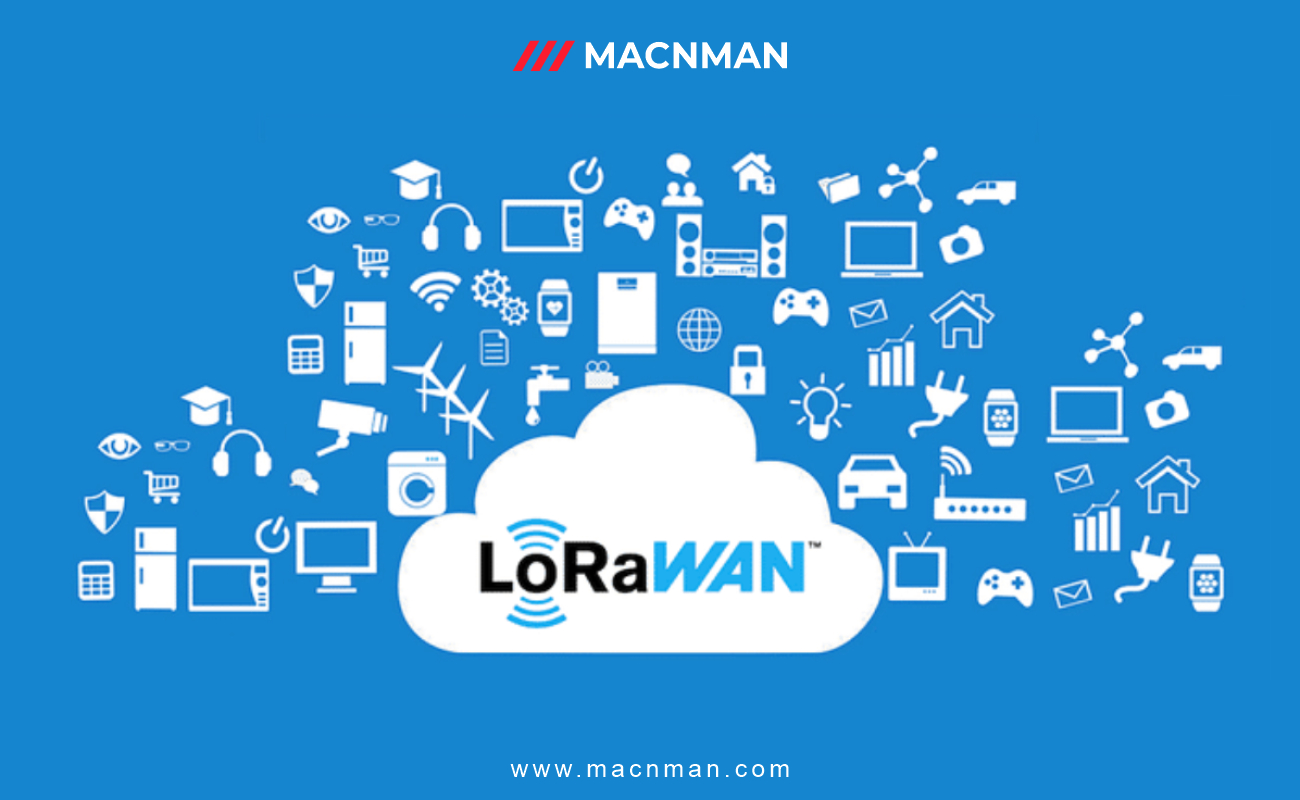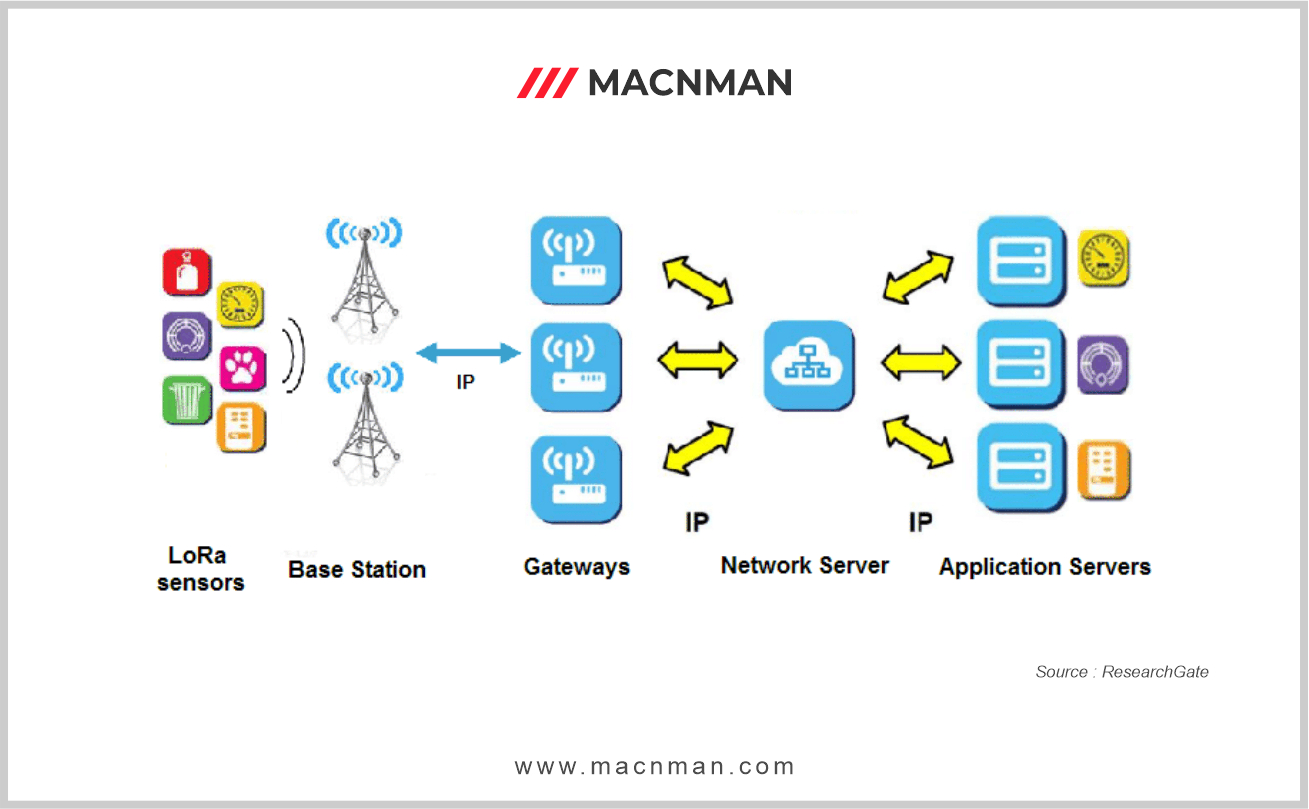
Introduction:
The Internet of Things (IoT) has changed how we engage with technology by connecting gadgets and allowing for seamless communication. A robust and efficient wireless technology is necessary to permit this communication over great distances. LoRaWAN is a low-power, wide-area networking protocol intended primarily for IoT applications. LoRaWAN is an ideal solution for a wide range of IoT use cases due to its long-range coverage, low power consumption, and secure data transmission. We will cover all you need to know about LoRaWAN, from its fundamentals to its practical implementation, in this comprehensive blog.
What exactly is LoRaWAN?:
It is intended to facilitate long-distance communication between low-power devices such as sensors and actuators and IoT applications. LoRaWAN operates in unlicensed radio frequency channels, making deployments flexible and cost-effective.
The LoRaWAN makes use of LoRa (short for Long Range), a low-power, wide-area network technology. LoRa is in charge of facilitating long-distance communication while utilising a limited amount of power.
The Key Components of LoRaWAN
- End Devices
- Gateways
- Network Server
- Application Server
Understanding LoRaWAN Network Architecture
- Device-to-Gateway Communication
- Gateway-to-Network Server Communication
- Network Server-to-Application Server Communication
LoRaWAN Classes: A, B, and C
LoRaWAN supports three different classes of devices: Class A, Class B, and Class C. These classes define the timing and power-saving capabilities of the devices, allowing for flexibility in accommodating different application requirements. Class A devices have the lowest power consumption, while Class C devices offer real-time communication capabilities.

LoRaWAN Applications
LoRaWAN has found applications in various industries and use cases due to its long-range coverage, low power consumption, and secure data transmission capabilities. Smart Cities, Healthcare Smart Agriculture, Industrial Monitoring, Environment monitoring, Waste management, Asset management, etc. are some of the prominent applications for LoRaWAN. However they are explained in detail in our other blogs.
LoRaWAN Applications
As a technology, LoRaWAN faces many challenges. However, the LoRaWAN ecosystem and advancements in technology are continuously addressing these challenges. Here are some key challenges of LoRaWAN and how they are being addressed:
Bandwidth Limitations: LoRaWAN operates in unlicensed frequency bands, which means it shares the spectrum with other wireless technologies. As a result, there can be limitations on available bandwidth. To address this challenge, network operators and LoRaWAN solution providers are optimizing data transmission protocols, implementing adaptive data rate algorithms, and utilizing efficient compression techniques. These approaches help optimize network utilization and maximize the number of devices that can be accommodated within the available bandwidth.
Interference and Congestion: In dense urban areas or environments with multiple LoRaWAN deployments, interference and congestion can occur, leading to degraded network performance. LoRaWAN addresses this challenge through techniques like frequency hopping and adaptive spreading factor selection. Frequency hopping enables devices to switch between different channels, minimizing the impact of interference. Adaptive spreading factor selection allows devices to adjust their transmission parameters dynamically, optimizing communication based on the network conditions. These techniques help mitigate interference and congestion issues, ensuring reliable communication.
Scalability: LoRaWAN is designed to support a massive number of devices, but scalability can still be a challenge, especially in large-scale deployments. To address this, LoRaWAN network architecture and protocols are continuously evolving. Advancements such as distributed network architectures, hierarchical network setups, and intelligent routing algorithms are being developed to enhance scalability. These approaches help manage the increasing number of devices, ensure efficient network management, and maintain reliable connectivity in large-scale deployments.
Battery Life: Low-power consumption is a key feature of LoRaWAN, allowing devices to operate for extended periods using battery power. However, maximizing battery life remains crucial, especially for devices deployed in remote or inaccessible locations. LoRaWAN device manufacturers are continually improving power management techniques, optimizing sleep cycles, and implementing efficient data transmission strategies. These optimizations help extend battery life and ensure long-term operation without frequent battery replacements.
Network Coverage: LoRaWAN's long-range capabilities are ideal for wide-area coverage. However, achieving adequate coverage can still be a challenge in certain scenarios, such as densely built urban areas or challenging terrains. To overcome coverage challenges, network operators and solution providers are expanding their network infrastructure, strategically deploying gateways, and utilizing advanced antenna technologies. Additionally, they are exploring innovative deployment options such as deploying gateways on mobile assets or using drones to extend coverage in remote areas.
Conclusion
LoRaWAN continues to expand and adapt to meet these difficulties, thanks to the LoRa Alliance, network operators, device makers, and solution suppliers working together. The LoRaWAN ecosystem is constantly improving due to continuing research, standardisation, and technology improvements, making it a dependable and scalable solution for a wide range of IoT applications.
LoRaWAN will likely play an important role in connecting and facilitating communication between devices across multiple industries as the IoT landscape evolves. Mastering LoRaWAN opens up a world of potential for creating unique and impactful IoT solutions, whether you're an individual developer, a business owner, or an IoT enthusiast.